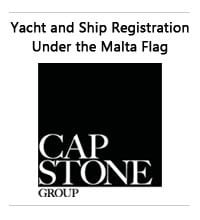The new Zattera 24m that is currently under construction at Castagnola Yacht in Lavagna, Italy began with an idea from Renzo Piano and Olav Selvaag. Nauta Design and Francesco Rogantin gave shape to that idea and Siemens Energy created its propulsion system. Inspired by the dream of being able to live life at sea in spiritual silence and in harmony with the natural environment, Zattera, which in Italian means raft, is more a means for enjoying life at sea than a proper yacht. Built in sustainable yet durable wood, its design is pared down and modern with clean and simple hull lines. Purity and simplicity are the words that best define Zattera’s inspiration. These are achieved through a design that features a raft-like low freeboard and wide beam. The hull’s clean lines are given extra emphasis by a light and transparent glass superstructure that almost seems to float and that allows for direct, unhindered visual contact between Man and Nature. The feeling aboard is one of lightness, being immersed in Nature, flying free. Fundamental aspects of the project were increasing serenity to the maximum and reducing noise pollution to a minimum. A vessel that by philosophical choice is made for enjoying the natural soundscape of the sea, moving slowly in Nature and living immersed in peaceful anchorages has to move silently and with reduced fuel consumption. The idea behind Zattera is following the sound of the sea, sailing slowly: the dimension of serenity and peace at sea. The main choices of the project derive from this idea: first of all its pure and simple look. Zattera is relatively lightweight with a displacement hull that can navigate at up to twelve knots with a ten knot cruising speed. CFD testing allowed for an optimised bow shape with good sternwards flow and reduced resistance. Siemens Energy’s hybrid propulsion system was fundamental in reducing emissions and careful attention was dedicated to eliminating vibration and sound pollution in the surrounding environment. Zattera has lithium-ion batteries and can navigate in silent mode under electric power only. The propulsion system and the craft’s hotel functions run on two 180kW variable RPM diesel generators and a 95kWh battery pack connected to a 700 Volt continuous distribution system. Zattera has a traditional shaft drive run via twin 135kw permanent magnet motors that are directly connected to the shafts without the use of inverters to increase the efficiency of the system, and to further reduce sound and vibration produced by rotation. The diesel generators were purpose-developed by Mase Generators for Siemens Energy with Volvo Penta 300hp motors using variable speed technology with permanent magnet alternators in order to minimize consumption and emissions. The generators are installed on a double anti-vibration pad, an unusual measure that was taken on this vessel and one that underlines its calling to reduce noise pollution. The same care and attention was dedicated to soundproofing the cases that the generators are mounted in and entire engine room. Even the underwater exhaust system is undergoing painstaking soundproofing testing. Solar panels will also be mounted on Zattera to create a zero impact and no cost renewable energy source. All of these systems were purpose created to allow Zattera significant autonomy both while navigating and during use in hotel mode. The Castagnola shipyard has constructed the hull, the deck and the superstructure in solid wood that have been treated with silica-infused epoxy resin for optimal adherence, and marine grade plywood. The unusual hull shape called for a keel beam and a counter keel in cold-moulded iroko wood that get larger towards the bow. Given the particular shape of the bow all of the wood planking in that area is crafted using five different layers laid cross grain to each other. All frames are in solid ash while hull planks are in marine grade plywood. The deck is in lightweight marine grade okoune, while the interior structural bulkheads are in wood lined with rubber and cork for insulation from vibration and sound. The interior layout sees the owners and two guest cabins fore with the galley, crew area and the engine room aft. The styling is understated, clean and simple while ceiling heights are generous throughout. The saloon in the lower deck is directly connected to the coachroof via symmetrical stairs. Natural light floods in from a large skylight placed at the centre of the saloon. The floor is at the same height as the waterline so you feel as if you’re walking on water while inside the boat. Renzo Piano and Nauta Design have years of experience sailing and are sailors at heart. Aboard Zattera they have incorporated sailboat features such as masts and derricks that will be used to load and unload the tender and to set up awnings fore and aft. While functional, these elements will also recall sailing, an approach to the rapport between man and nature that is close to this team’s hearts.
Showing posts with label Castagnola. Show all posts
Showing posts with label Castagnola. Show all posts
December 10, 2021
May 17, 2021
New Model: Castagnola Heritage 9.9
There is always magic surrounding a custom project, whether the size is five or fifty meters. The magic comes from the fact that in a custom the boat builder is not bound to commercial serial production, and builds a boat in fitting to the clients request. Castagnola from Lavagna in the South of Genova, Italy has always been a custom builder, and while they are mostly known for Italian style motor and super yachts upwards of twenty meters, with this new Heritage 9.9 they surprised the Nautical World for a size which is very rare associated with custom building, more so in the European continent. The Heritage 9.9 is a creation born from the will of Giovanni Castagnola grand son Gabriele Maestri, who helped by Nauta design for the exterior and interior, and Francesco Rogantin for naval architecture created this fully custom ten meter sport cruiser. In the Heritage 9.9, Nauta designed a day sport cruiser idle for that occasional over night stay for a couple, with an interior sleeping two in a central double berth which is served by a separate shower head to port side. Outside is where the living of the Heritage 9.9 is concentrated with two double aft sun-pads, a C-shaped dinette to port side, opposite L-shaped galley, and helm station to starboard. The Castagnola Heritage 9.9 is powered by twin Yanmar 320hp with stern drive propulsion which allows for top speed up to forty knots.
Technical Data:
LOA - 10.91 m (35.7ft)
Hull Length - 9.99 m
Beam - 3. 54 m
Draft - 0.54 m excludes drives and props
Displacement - 6.5 t
Fuel Capacity - 500 l
Accommodation - two berths
Engines - 2 x Yanmar 320hp
Propulsion - stern drive
Speed - 40 knots max 34 knots cruse 30 knots economic fast cruise
Range - 160 nm at 30 knots cruise
Construction - wood in tech skin, cold moulding wood structure and exterior in carbon fiber and epoxy resins skin
Project - Francesco Rogantin naval architect, Nauta exterior and interior, Gabriele Maestri construction
Certification - CE B + C
November 28, 2014
New Model: Castagnola 38 WJ
On 22 November 2014 in Lavagna shipyard facilities the futuristic and traditional Castagnola 38 WJ was launched. The new Castagnola flagship is a super yacht with a length of over 124 feet and an eight meters plus of beam, and as the tradition of this builder dictates is completely built in wood. The hull construction of 38 WJ has been done by mean of the well proven triple planking method; with the additional use of fiberglass and resin improving strength and water resistance. Indeed Castagnola 38 WJ is one of the largest super yachts ever built in wood cold molding, and will be triple water jets powered. Its name is “Angra Too”, as an amazing island of Brazil. The exterior areas have been designed to ensure maximum comfort and continuity from bow to stern. The cockpit, with a comfortable dining area is protected by the fly bridge and the walk around passages, and is connected through two staircase with the spacious aft swimming platform, the real point of contact with the sea and docking area for the many toys available to owners and guests. The flybridge, a large terrace of 65 sqm positioned at over four meters height from the sea, will be furnished with just few fixed elements to be flexible to the owners and guests needs; interesting at this regard are the two extendable sunbeds as well as a handy bar, a table for twelve and the sofas available at side or front running. At the bow, the wheelhouse with seating for the captain, pilot and passengers. The interiors, developed by the Andrea Borzelli and Sara Berta architects firm as well as the exterior style in cooperation with Giovanni Castagnola, have plenty of space and a habitability both in the day and the night zone. The main deck offers a large living room at the stern, in direct communication with the exterior, furnished with a dining table for twelve people, a living room with two sofas and a fully stocked wet bar. Amidships there is a single guest cabin, a pantry area located between the saloon and the kitchen which is very large and well connected with the crew area and the starboard corridor. The forward area is entirely dedicated to the owners quarter, whit a large full beam cabin, two bathrooms, desk area, walk-in closet and a gorgeous sea view. Four cabins on the lower deck, each with its own bathroom, along with a comfortable crew mess can accommodate up to seven crew members. The guest area is characterized by two twin cabins and two very comfortable double cabins served by a corridor full of storage spaces. A modern gym is placed between the crew and the guest area and is directly connected with the upper deck via a dedicated staircase. Finally in the raised pilot house, next to the dashboard area there is a clever owner office. As far as technical aspects concern, the boat will be powered by three MTU 1948hp each, coupled to three Kamewa water-jets through ZF gearbox and double elastic coupling. Hull lines have been specially designed for the particular propulsion layout, and have been tank tested and optimized. The Castagnola 38 WJ reaches a 28 knots cruise and a 31 knots max speed.
Technical Data:
LOA - 38 m (124.6ft)
Waterline Length - 31.3 m
Beam - 8.1 m
Draft - 1.2 m
Displacement - 146 t
Fuel Capacity - 1800 l
Water Capacity - 2500 l
Accommodation - 10 guests in 5 cabins
Engines - 3 x MTU 12v2000 M94 1948hp
Propulsion - Kamewa 55A3 water jets
Speed - 31 knots max, 28 knots cruise
Construction - cold molded triple planking wood with resin and fiberglass
Project - Giovanni Castagnola, Francesco Rogantin naval architecture, Andrea Borzelli and Sara Berta interior and exterior
Certification - Rina C, Hull Y unrestricted navigation
January 19, 2013
Project: Castagnola 38 WJ
At the Italian Lavagna shipyard facilities of the Castagnola family work has been started the construction for the 38 WJ. The new flagship for this known wood yacht builder, which will measure a length of over 38 meters and have a beam of eight plus. The hull construction will be done by wood with the well proven triple planking method; also, the shipyard technical office is also evaluating the use of carbon fiber sheets to improve the strength and keep the boat lighter: 146 tons in full load displacement are expected. After completion, she will be one of the biggest planning super yachts ever built in wood, and to be water jets powered. Designed by by Andrea Borzelli and Sara Berta architects for both the interior and exterior, the Castagnola 38 WJ will be a two deck and a half super yacht featuring what I call modern Italian sleek lines in vogue since the early eighties. The 38 WJ will sleep a total of eleven guests, in four VIP suites below deck, with the owners stateroom on the main deck. Crew accommodation will be in three double cabins located at the midships of the hull. The crew area will also feature a lobby with an L-shaped settee, and a galley. A gym is to be located below to midships, and this also features a separate staircase access, plus another one from the crew area. Castagnola 38 WJ also offers interesting power choice having triple MTU engines of 1948hp engines with Jet propulsion, who should push it up to a top speed of 31 knots.
www.castagnola.biz
www.castagnola.biz
October 15, 2011
Project: Castagnola 24 Storica
Giovanni Castagnola with his Costruzioni Navali Tigullio, presents a project for a new 24 Storica model. This new pocket sized super yacht, designed by architect Michele Cadore, with engineering by Giovanni Castagnola will be a fusion of traditional styles concentrated in a one and a half deck. You can look at the 24 Storica for looking very traditional up top, with its raised saloon half deck area, looking very Nordic or representing the old fast commuter yachts of the early twentieth century which come from New York, USA. Her interior will offer three spacious double cabins, with an owners stateroom located to fore. Construction of the 24 Storica continues the virtues of the yard with wood, used along the more modern aluminum material. Power will be from twin 1100hp MAN engines which should give a top speed of 28 knots, and a cruise of 26.
Subscribe to:
Posts (Atom)























